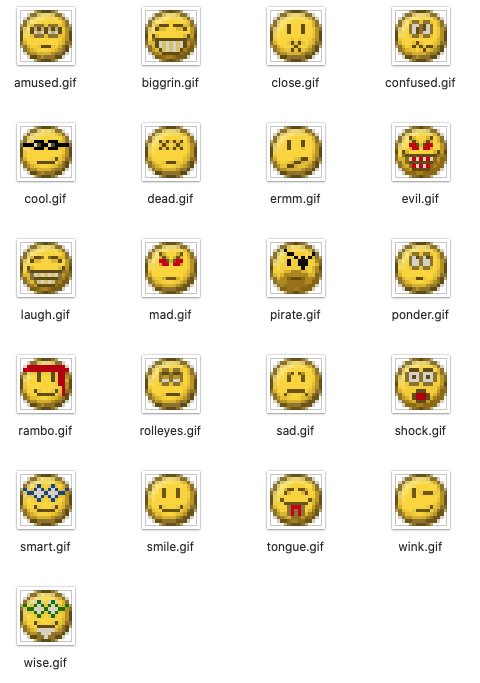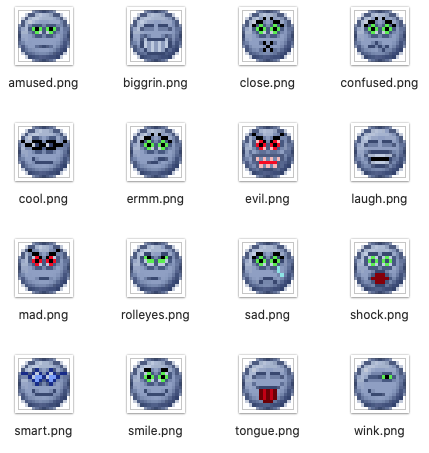My Old School Emojis
Back in the early days of the internet – before smartphones – emoticons, or emojis 🙂 as we know them today, was the Wild West of consistency and creativity. Sure, you could create a 16×16 pixel smiley face GIF and place it next to text or the classic sideways ASCII :), and that would get the same effect as today, but it wasn’t nearly as convenient or universal.
During that time, there were a bunch of homemade emoticon sets with different themes and styles, some of which were really fun and had unique faces that have not made it to the official Unicode specification as of yet.
Below are screenshots of my own personal emoticons that I designed in Photoshop back in 2003:


Where Did This All Begin
It all started on September 19, 1982, when Scott Fahlman, a computer scientist at Carnegie Mellon University, suggested using :-) and :-( to indicate jokes or serious statements on online message boards. His now-famous post on the university’s bulletin board read: “I propose that the following character sequence for joke markers: :-) Read it sideways.”
Why Emoticons Mattered
The internet, even in its primitive form, was a place of conversation—but it lacked the cues we rely on in face-to-face interaction. Sarcasm, jokes, and emotions often got lost in translation. Emoticons helped solve that. They were a way to clarify intent, add warmth, and prevent misunderstandings. In short, they made digital conversation a little more human.
Emoticons have never fully disappeared. Many people continued using them out of habit, nostalgia, or for their minimalist charm. Even today, typing :) into many messaging platforms automatically converts it into an emoji—an homage to its roots.
Emoticons may seem quaint in the era of memes and reaction GIFs, but they played a crucial role in shaping how we communicate online. They were the first attempt to inject emotion into text, and in doing so, they bridged the gap between cold code and warm conversation.
Comment 1
Nice post. I learn something totally new and challenging on websites
🚫 The comments are closed for this article.